Classification > Family
Tettigoniidae
> Subfamily
Phaneropterinae
> Tribe
Odonturini [Anisophyini]
> Genus
Xenicola
 Geographic distribution
Geographic distribution
Distribution
No economic damages registered
- Argentina
- Buenos Aires
- Entre Ríos
- Uruguay
Other distribution
south of Brazil
First two antennal segments with black ventral markings, in male pronotum with black rear margin. Populations along Río Uruguay and at the coast of the Río de la Plata. Understory of woodland. 15-18 mm.
- BRAUN, H. 2021. An interesting new record of the almost unknown brachypterous phaneropterine katydid Xenicola dohrni (Orthoptera: Tettigoniidae) from Argentina, and its high-ultrasound male-female communication. Zootaxa 4948(2):287–294
- GRECO-SPÍNGOLA, S. & BRAUN, H. 2022. Primer registro de Xenicola dohrni (Brunner von Wattenwyl, 1891) (Orthoptera, Tettigoniidae, Phaneropterinae, Odonturini) en Uruguay. Boletín de la Sociedad Zoológica del Uruguay 31(1):e31.1.4:3.
- BRAUN, H. 2023. Tettigoniidae. In Claps, L.E., Roig-Juñent, S.A. & Morrone, J.J. (Eds.). Biodiversidad de Artrópodos Argentinos Volumen 6. Editorial INSUE UNT, San Miguel de Tucumán, Argentina. 128–149:141, 143.
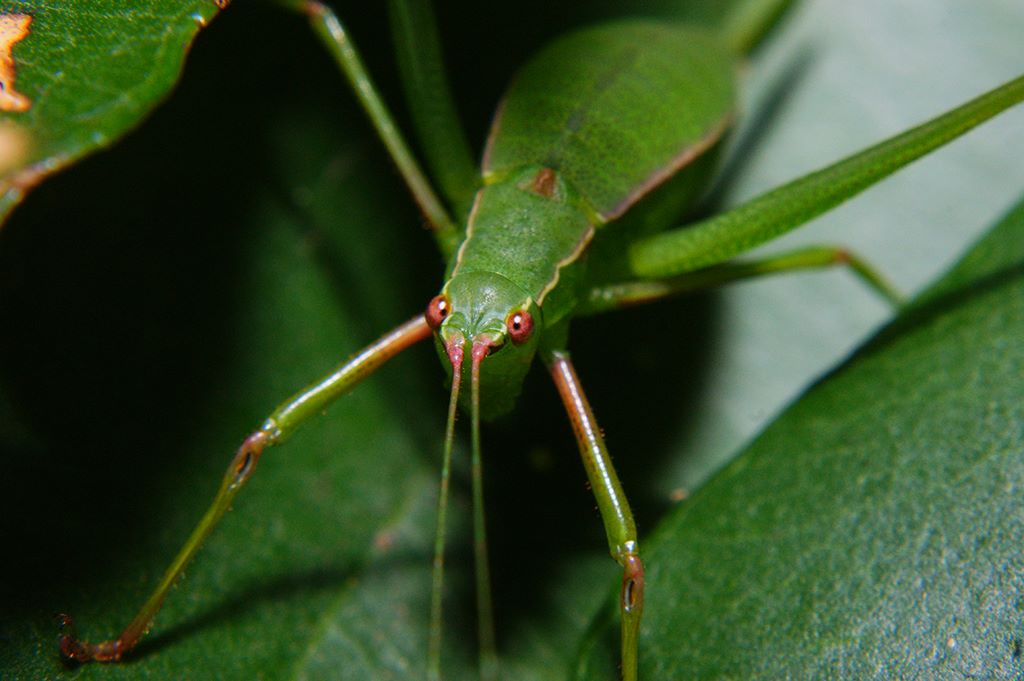

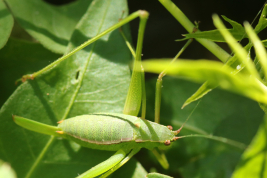
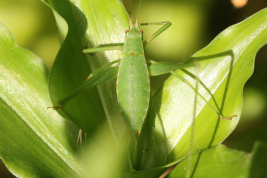
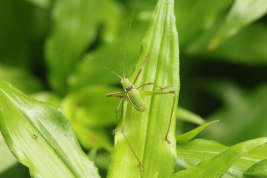
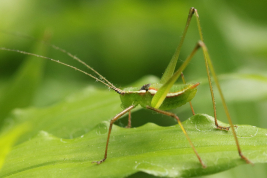
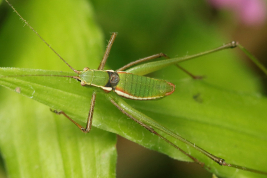
![variable calling song of male and responses of female (violet arrows) at 27°C: A three ticks of continuously calling male, female absent; B one tick from A; C three calls of continuously calling male, the first with response of female; D First call from C with low-amplitude response (cage with female about 1 m away); E three calls of continuously calling male, the first with response of close-by female; F first call from E with loud response; G final part of F; H frequency spectrum of ticks made by male; I same of lower-amplitude rattling of male (C-F); J same of female response [modified from Braun 2021]](../../images/thumbs/588.jpg)
